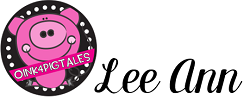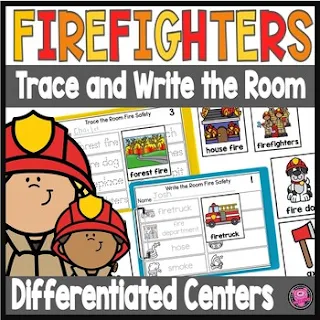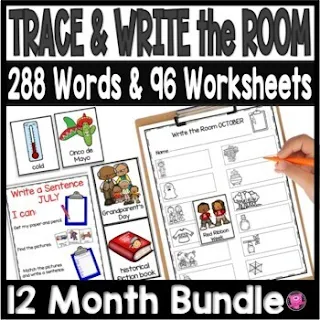
Picture this: Imagine your students exploring the room for clues and hidden words while carrying markers and bursting with excitement. Write the Room activities enable kids to interact actively with their surroundings while making learning fun. They are not only finding words as they explore far and wide but also expanding their vocabulary, improving their spelling, and sharpening their observational skills. Plus, pure pleasure makes writing an engaging task rather than an academic endeavor.
You can also look at Write The Room exercises as a secret booster for memory strength! According to scientific research, combining studying with some movement and hands-on enjoyment is like making a special glue that makes knowledge stick around longer. Imagine your eager students scurrying over the room, looking for hidden words while their brains throbbing, building solid connections reinforcing the learning.
A great connection develops as they swap notes and laugh joyously together. Finishing the word list turns into a badge of honor, sparking the sensation of success that opens the door to a genuine appreciation for learning. Are you ready for an extraordinary adventure where learning and discovery come together?
Get comfortable as you explore the wonderful advantages of Write The Room adventures, whether you're a teacher or a parent looking for interactive classroom ideas. Let's dive into the magical Write The Room activities and see the magic happen before our eyes!
Write The Room Activities: The Meaning Behind
Young learners can benefit greatly from Write The Room activities, an interactive and dynamic teaching strategy. Education is made effective and fun through the creative integration of active learning and physical activity.During Write The Room activities, educational materials, such as vocabulary cards, math puzzles, or questions about a particular topic, are scattered throughout the classroom or learning space. Then, they are encouraged to explore the area, locate the resources, and write down their findings or observations on a worksheet.
With this approach, the entire classroom is transformed into a learning space where the students actively engage in the learning process.
Benefits of Write The Room Activities
1. Active Learning
Moving while learning has been shown to increase engagement and retention. Write The Room exercises bring Students out of their seats, allowing them to explore and understand the topics firsthand.Kids can have fun while learning a lot since physical activity is involved. Focus and cognitive performance have been linked to regular movement breaks while learning.
2. Vocabulary And Language Enhancement
Students are exposed to new vocabulary and concepts through Write the Room exercises. Finding, reading, and writing these words by hand helps students better grasp and apply them.Students must read, write, and talk about the themes they encounter as part of Write the Room exercises, which promote language fluency.
3. Contextual Learning And Problem-Solving Skills
By placing students in realistic situations, Write the Room fosters contextual awareness. Applying abstract concepts in practical situations helps them understand.Students develop their critical thinking and problem-solving abilities by actively searching for information. Write the Room promotes independent research and inquiry.
4. Memory Retention
Memory retention is improved when there is both movement and active participation. As they associate information with physical activity, students remember it more easily.Moving around while learning stimulates various brain areas and boosts the encoding and retrieval processes. Every interaction plants a memory seed that grows into a flourishing knowledge tree, whether tracing characters on the wall or finding words hidden under a desk.
5. Multi-Sensory Engagement And Collaboration
Write the Room activities support a variety of learning styles by utilizing the visual, auditory, and kinesthetic senses, ensuring that every student fully understands the subject matter.The inclusive activity Write the Room can be adapted for people of all skill levels and learning styles. It also promotes interaction among peers and teamwork.
6. Enhancing Creativity and Imagination
Writing the Room tasks that contain intriguing and imaginative aspects stimulate students' creativity and ability to think outside the box.Education is made more pleasurable and fosters a good attitude toward learning when it involves movement and interactive exploration.
7. Independent Learning
Students gain autonomy and a sense of responsibility for their learning experience as they complete the Write the Room task independently. Students are prompted to become more engaged in the subject matter by Write the Room's exploration component, which piques their interest and sparks their curiosity.How To Implement Write The Room Activities
Follow these essential steps to ensure smooth and effective use of Write the Room activities:1. Choose a Subject or Topic That Is Relevant
Choose a subject or topic relevant to your curriculum's goals to start. Make sure the content is interesting and appropriate for your pupils' level of learning, whether it be vocabulary items, math problems, or historical information.2. Provide Educational Materials
Collect or create educational materials closely related to the topic of choice. These could be diagrams, word cards, flashcards, or other visual learning aids. Your kids will be searching for these materials like hidden gems.3. Strategic Placement
Arrange educational resources organized throughout the classroom or other designated learning spaces. Place them in an accessible and safe location that promotes movement and exploration.4. Clear Instructions and Worksheets
Clear directions and worksheets should be given to pupils, outlining the activity's goals and the tasks they must accomplish. Distribute worksheets so that students can record their findings. This is an essential step in ensuring that the learning process is reinforced.5. Exploration Time
Give students permission to explore the area and find hidden materials. They should read, consider, and interact with the content of the materials as they locate each item. This practical method improves their comprehension and memory.Write The Room Resources In The Classroom
With the help of these Mail and Post Office Trace and Write the Room activities, your children will learn everything there is to know about the Post Office, Mail, and Postal Workers in a fun and interesting way. This theme set has 2 posters, 10 differentiated worksheets, and 41 Post Office word cards.Students will learn about the post office, mail carriers, mail, and tools these community helpers use. This set will help you expand your vocabulary, improve your writing, and find resources. These writing exercises are an excellent addition to your community helpers unit and may be used in your learning centers.
Use these simple and easy Construction Theme Center activities and Write the Room activities to spice up your Community Helper Units! Your kids will be active as they discover how construction workers and the tools they employ benefit their neighborhood.
Your Community Helpers social studies unit will be the perfect addition, enhanced by these differentiated activities in the writing and literacy centers that your students will absolutely adore!
These social studies community worker activities and worksheets will offer students practice learning about firefighters, fire safety, and the tools they use to keep us safe. They are the ideal supplement to your social studies community worker units.
Students will look for, trace, write, and learn vocabulary items related to firefighters and strategies for staying safe when a fire occurs. These community helper activities are ideal for students to practice and improve their vocabulary and writing abilities in social studies and writing centers because they are quick and simple to set up and provide clear instructions for the kids.
The tracing and writing worksheets enable differentiation to fit the needs of all of your kids, and they are quick and simple to set up for writing center activities. It includes 288 seasonal words and 96 differentiated worksheets for building vocabulary and practicing writing.
With the help of these printable worksheets and word wall vocabulary cards, students may practice writing sentences, learn about the twelve-monthly theme words, practice writing upper and lowercase letters, and expand their vocabulary. As kids move around the classroom matching words and pictures to their worksheets, they'll be active, interested, and talking about vocabulary words.
Overall, Write the Room activities offer an exciting and effective way to make learning engaging and impactful for students. Please stay tuned for my next blog, where you'll find more teaching tips and recommendations to advance your teaching career and positively influence the lives of your students, one classroom at a time.
So, I encourage you to turn learning into an adventure for your students! 🌟 May you have an OINKTASTIC week ahead, and good luck in your teaching journey!

If you've enjoyed this blog and are interested in exploring more articles focused on writing for children, here are a few suggested reads:




